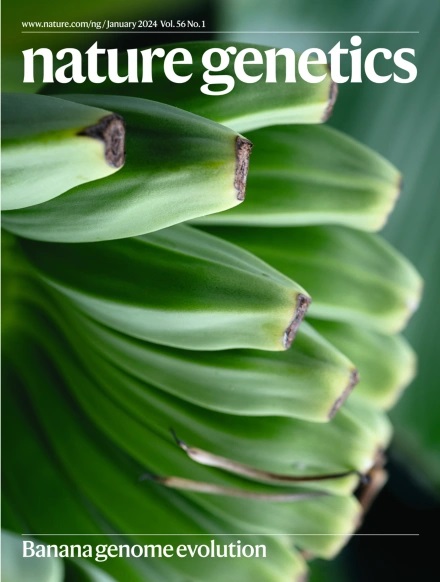Enhancer mutational screen in vivo
IF 29
1区 生物学
Q1 GENETICS & HEREDITY
引用次数: 0
体内增强子突变筛选
转录增强子是动态基因调控的关键,但目前关于哪些序列和基序对增强子的正常功能至关重要的知识仍然不完整。这限制了我们解释增强子突变与疾病风险相关性的能力。Kosicki等人决定突变人类发育促进子,并研究其在体内的功能敏感性。具体来说,他们选择了7个在胚胎大脑、心脏、肢体和面部活跃的增强子,并获得了大约1700只携带260个人类增强子等位基因的转基因小鼠。诱变方法涉及改变每个增强子中的12bp块。这项大规模的实验表明,69%的测试区块是增强子活性所必需的。正如预期的那样,大多数突变导致功能丧失(60%),而只有9%的突变产生了功能获得等位基因。此外,作者使用机器学习来预测增强子中关键核苷酸的身份。大部分预测基序或位点(88%)与实验数据一致。事实上,该模型显示出良好的敏感性,并识别出59%的功能块。这项体内研究的规模令人印象深刻,它清楚地强调了人类发育促进剂对扰动的敏感程度。这一分析极大地促进了我们对增强子结构和功能的理解。原始参考文献:Nature https://doi.org/10.1038/s41586-025-09182-w (2025)
本文章由计算机程序翻译,如有差异,请以英文原文为准。
求助全文
约1分钟内获得全文
求助全文
来源期刊

Nature genetics
生物-遗传学
CiteScore
43.00
自引率
2.60%
发文量
241
审稿时长
3 months
期刊介绍:
Nature Genetics publishes the very highest quality research in genetics. It encompasses genetic and functional genomic studies on human and plant traits and on other model organisms. Current emphasis is on the genetic basis for common and complex diseases and on the functional mechanism, architecture and evolution of gene networks, studied by experimental perturbation.
Integrative genetic topics comprise, but are not limited to:
-Genes in the pathology of human disease
-Molecular analysis of simple and complex genetic traits
-Cancer genetics
-Agricultural genomics
-Developmental genetics
-Regulatory variation in gene expression
-Strategies and technologies for extracting function from genomic data
-Pharmacological genomics
-Genome evolution
 求助内容:
求助内容: 应助结果提醒方式:
应助结果提醒方式:


